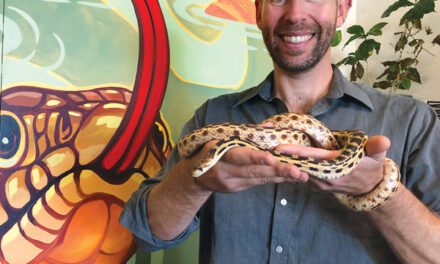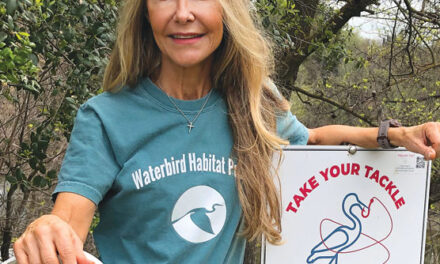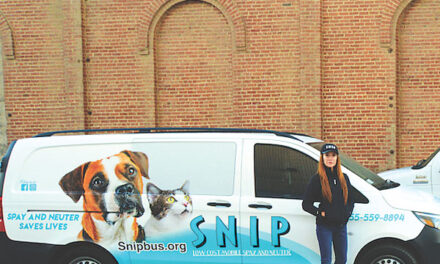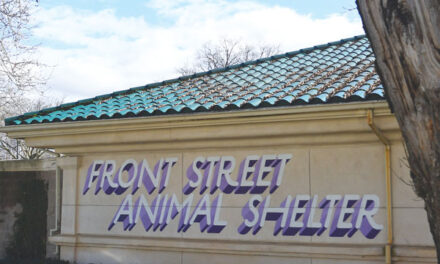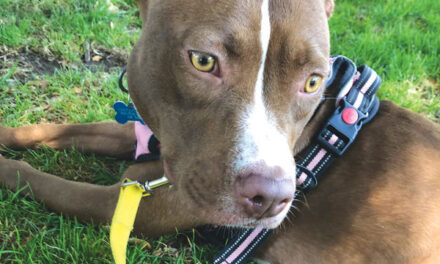“We got her!” Penny Scott’s text came Dec. 7, just after 7 a.m.
A female German shepherd, thin and fearful, had been seen for at least six months along the American River Parkway near the Estates Drive access. By day, she roamed the neighborhood and adjacent river trails. At night, she slept in the backyard of a home that abuts the parkway, slipping through a gap in the fence and bedding down in overgrown brush.
Runners, walkers and cyclists left food, but no one could win her trust. Early last December, a neighbor put out a call on social media. I reached out to fellow rescuers in the area. The response was unanimous—call Penny Scott. In less than 24 hours, Scott trapped the wayward pooch.
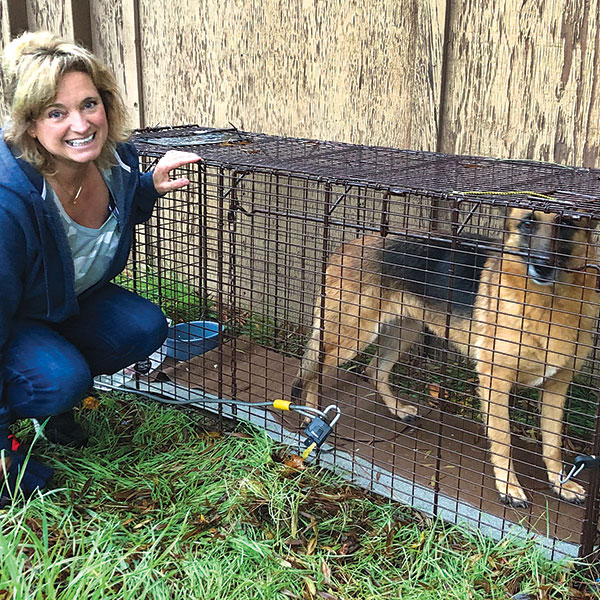
Scott and her husband live in Antelope with three rescue dogs. She recently retired after 20 years in property management and working graveyard at Target. She found her way into dog trapping in 2016, when she responded to a Facebook plea to help catch two terriers near a freeway.
“Six or seven people showed up,” she says. “We were running all over the place trying to catch these dogs. Eventually they were caught. And I thought, hmmm, that was kind of fun.”
In the past six years, Scott has trapped 464 dogs—mostly German shepherds, pit bulls and chihuahuas—in Sacramento and beyond. Her husband calls it “dogging.”
She spends hours, sometimes sleeping in her car, to capture stray mutts that animal control officers cannot catch. “They don’t have the resources and time,” Scott says. “They will do a drive-by. But you can’t just set a trap and leave it.” Scott places a camera nearby so she can monitor the trap on her mobile phone.
In addition to five traps ranging from 3 to 5 feet, Scott built a kennel trap, also called a “Missy trap,” made up of panels that can be broken down flat for transport and assembled on site. It can stretch to 10 feet if needed for the dog and situation. “If there are multiple dogs, you can get them all at the same time. Or for a bigger dog who might need a longer trap,” she says.
While she mostly works alone, Scott often relies on neighbors networking on Nextdoor, Facebook, and lost and found sites, and will team up with another local trapper.
Scott’s lengthiest trapping endeavor—a Labrador Chow mix—took 28 days in Oroville. “He had been out there a year and half—we know that from Facebook posts of people trying to get him,” she says.
Using her Missy trap, Scott caught the canine on the first day. But before she could secure him, he dug under the wire panel and escaped. “I was traumatized. I had never lost a dog like that.”
For 27 more days, Scott drove from Antelope to Oroville—5,106 miles, 90 hours of driving. “I slept in my car five nights.” She placed a smaller trap inside the Missy trap “because I was not letting him get away again,” and put the whole thing on cement so the dog couldn’t dig under it.
Scott trapped—and released—a neighbor’s dogs every day. She finally convinced the woman to keep her canines inside for at least 24 hours. “I caught him the next day at 1:30 in the morning.”
Scott’s own dogs have their stories. Shylo, a herding dog, was trapped on a farm in Lincoln at 3:30 a.m. on Christmas Eve. Scott lured her by dropping bacon along a fence line and shooting meatballs with a slingshot.
It took 26 days to capture Simone, a German shepherd, living for six months at the refuse center on Florin Road.
Scott’s vet confirmed from a photograph that the shepherd had recently given birth. On the 21st day, mom brought three 8-week-old puppies, one by one, to the feeding station. “It was like a movie,” Scott says. “She licked the dogs and left.”
Scott brought the infants to the trap every day. “Simone would come back to eat, but still wouldn’t go near the puppies.” Scott used the Missy trap with a canopy and a 150-foot rope tied to the door. On day 26, the shepherd entered the paneled encloser to eat. Scott picked up the rope and pulled the door shut. “She just sat down. She was calm. It was amazing.”
At her Antelope home, Scott has sectioned off a portion of her backyard and converted her garage into a “dog room” with a large kennel for overnight guests. One wall displays photos of every dog she has trapped. But mostly the wayward canines go straight to the shelter in the community where she captured them.
“I’m not in the business of rehoming dogs. I’m a trapper,” she says. “And I’m obligated to take them to the shelter because that’s the first place the owner is going to look for them.” The canines will receive medical care, including spay or neuter. Scott immediately posts all dogs on lost and found and social media sites.
“If I trap them at night, I bring them here because the shelter is closed. Or if they are really difficult, stressed out, I’ll bring them here to decompress. Once they stop nipping or cowering and hiding—start wagging their tail when I go in to feed them—then I know they’re fine, and they will make it at the shelter.
“The forgotten ones are my favorites—that nobody can catch. And I stay until the end. I’ve never quit a dog.”
Cathryn Rakich can be reached at crakich@surewest.net. Follow us on Facebook, Twitter and Instagram: @insidesacramento.




